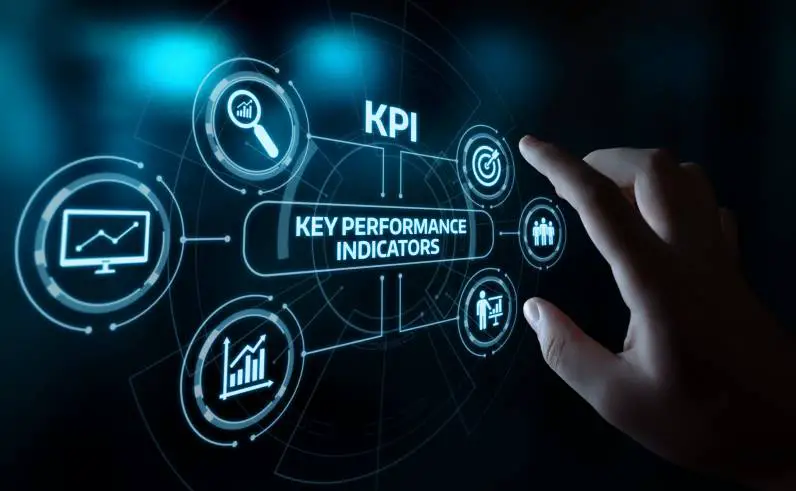
CommonCentsMom.com is advertiser-supported: we may earn compensation from the products and offers mentioned in this article. However, any expressed opinions are our own and aren't influenced by compensation. The contents of the CommonCentsMom.com website, such as text, graphics, images, and other material contained on this site (“Content”) are for informational purposes only. The Content is not intended to be a substitute for professional financial or legal advice. Always seek the advice of your Financial Advisor, CPA and Lawyer with any questions you may have regarding your situation. Never disregard professional advice or delay in seeking it because of something you have read on this website!
Key Performance Indicators or KPIs are metrics that you can measure for your business. It is important to take a look at the numbers that matter to its success and growth. You will be able to make the necessary decisions based on the data you have right in front of you.
If you notice your sales not hitting your target, pay attention to any relevant numbers that may cause the problem. From there, you can pinpoint what the problem might be. We will go deeper into detail about KPIs and how they can be helpful for your business.
Let’s get started right now.
What are KPIs?
KPIs are metrics that will measure the performance of your business. Whether it’s a team-setting or a one-person band, it’s essential to use KPIs to measure the progress of your specific goals and objectives. These can be measured in regards to financial and non-financial performances.
Let’s take a look at some of the financial related KPIs that may apply:
- Revenue: The income brought in by the sale of your products and services
- Expenses: Money subtracted from your revenue to pay for products or services that support the growth of your business
- Profits: The positive net gain of cash after revenue is subtracted from expenses
- Cash flow: The amount of money that is being transferred in and out of a business
Keeping track of your business finances is the most critical task. The reason for this is that your finances are one of the major pillars of any business you own. You make decisions based on how much money you have (or don’t have).

You can make a decision to invest extra cash in a different part of your business. Or you need to cut back or eliminate certain expenses in order to stay above water financially. A positive example is that you may have enough money to hire new people.
A negative example is you are losing money because you’re overspending on a certain expense that doesn’t give you a positive ROI. It is important that you keep track of the KPIs that really matter in your business.
You will be able to identify certain bottlenecks that can hurt your business. From there, you’ll know where to locate it in your sales funnel and make improvements. You can also use KPIs to focus on the future.
You can use it to forecast future projections. Your past KPIs can also be useful in helping you make the forecasts a bit more accurate. As a business owner, you will be constantly setting goals and achieving them.
Keeping track of your KPIs will be a regular process. It may seem tedious at first. Yet, you’ll feel like it’s second nature when you get used to it.
If you are serious about your business, keeping track of the numbers is not an option. It’s a ‘you have to do it’ task.
How to Measure KPIs Effectively
In order to measure your KPIs effectively, you will need to follow these key steps. Here’s what they are:
1. Define the KPIs
Define the KPIs that will be important to your business. These will need to be specific, measurable, and relevant to your goals and objectives. They should also be tied to a specific business activity or process that is aligned with your overall strategy.
2. Collect the data

After you define your KPIs, you can collect the data that can be used to measure performance. You can collect data in plenty of ways. This includes conducting surveys, sales reports, customer feedback, and financial statements. You need the data to be as accurate, reliable, and up to date as possible.
The reason is obvious. You need to make the right decisions driven by data. Inaccurate data can lead to decisions that can backfire on you. It can lead to a business going from sustainable to failing in almost no time.
3. Analyze data
This is one of the most critical steps in measuring KPIs. Analyzing the data will determine the performance of your business. This also includes any individuals or teams that are working towards your business goals.
Analyzing the data can be done either manually or using automated tools. During this analysis period, you need to identify any trends, patterns, and areas of potential improvement.
4. Set targets
After analyzing the data, you will then need to set the targets that your business should meet. For example, if one of your KPIs points out that you fell short of one goal, you may need to set it a little lower. Again, the targets need to be realistic, achievable, and aligned with your business goals and objectives. Use historical data and industry benchmarks as support pillars to help you set your targets.
5. Monitor progress
Monitoring your business progress is an ongoing process. This will allow you to see if things are trending in the right direction. You can also monitor it in real time using your dashboards and other tracking tools. This will give you an opportunity to monitor the progress regularly and take action as soon as possible.
Tracking it in real time will be better than almost any later time period. You might make a decision – only for it to be too little, too late.
6. Take necessary action

Taking action based on the KPI data provided will make or break your business. It’s important to decide on which action is necessary. If sales are down, it may be a good idea to train the sales team on how to make more sales.
If there are rising expenses, you might want to consider other options to replace that specific one. For example, you may be spending money on a certain software and its monthly price increased. You can switch to a competing provider that offers the same or even more for less.
Examples of KPIs
Now that you have a basic action plan on measuring KPIs effectively, let’s take a look at some examples. This should give you an idea of what to monitor and the kind of goals you want to set. Here are some examples of the following KPIs:
Revenue
This financial KPI measures the total income of your business over a specific period. If you have a business that involves sales such as retail or ecommerce, it is a KPI that cannot be ignored. Especially when you need to calculate the financials as often as you do.
The more revenue you generate is good. However, it’s important to keep this next KPI as reasonable as possible.
Expenses
A business cannot run without any necessary products or services. Including the ones that can perform certain tasks for your business. Furthermore, another necessary expense is your employees.
If you pay them well enough, they will happily continue to work for you. Whether it’s manpower or machines, expenses are essential. You need to keep them reasonable in order to make the business as financially sustainable as possible.
Sales growth

This financial KPI will measure a percentage of the sales over a period of time. This can measure a positive or negative percentage. If you are considering the idea of increasing revenue or expanding your customer base, this KPI in particular may be worth watching. This will also help you determine which products or services may need to be sold more (or even discontinued due to several factors).
Employee turnover
The turnover rate is a non-financial KDP that can help in terms of hiring people for your business. A low turnover means people are happy to work for your business. Some may still leave for whatever reason.
This can be due to new opportunities to further their career. Or they may be unhappy with the business in terms of the work culture or something else. If the turnover rate is high enough, something is wrong.
it is up to you to make the necessary changes. Give employees a reason to stay. Ask them what can improve in the company.
Website traffic
If you are running an all-digital business, this KPI is crucial. Without website traffic, the business itself can’t function. Traffic can bring you leads and eventually sales. You can find ways to get traffic to your site using organic approaches such as social media, SEO content, or even visual content like YouTube.
You can also employ paid traffic sources such as Google Ads (or similar ad platforms).
Final Thoughts
Measuring your KPIs will be crucial for any business. That’s why you need to keep an eye on some of the ones we have mentioned above regularly. Some of the measured KPIs should never be ignored.
Failing to keep track of the numbers in your business can lead to disaster. That’s why you need to know how much money is coming in and how it’s getting there. Likewise, you need to keep track of how much money is going out and to what expenses.
Other KPIs should not be ignored because you need to analyze them for any potential issues. Such issues that may seem like ‘no big deal’ can lead to major problems in the future.







